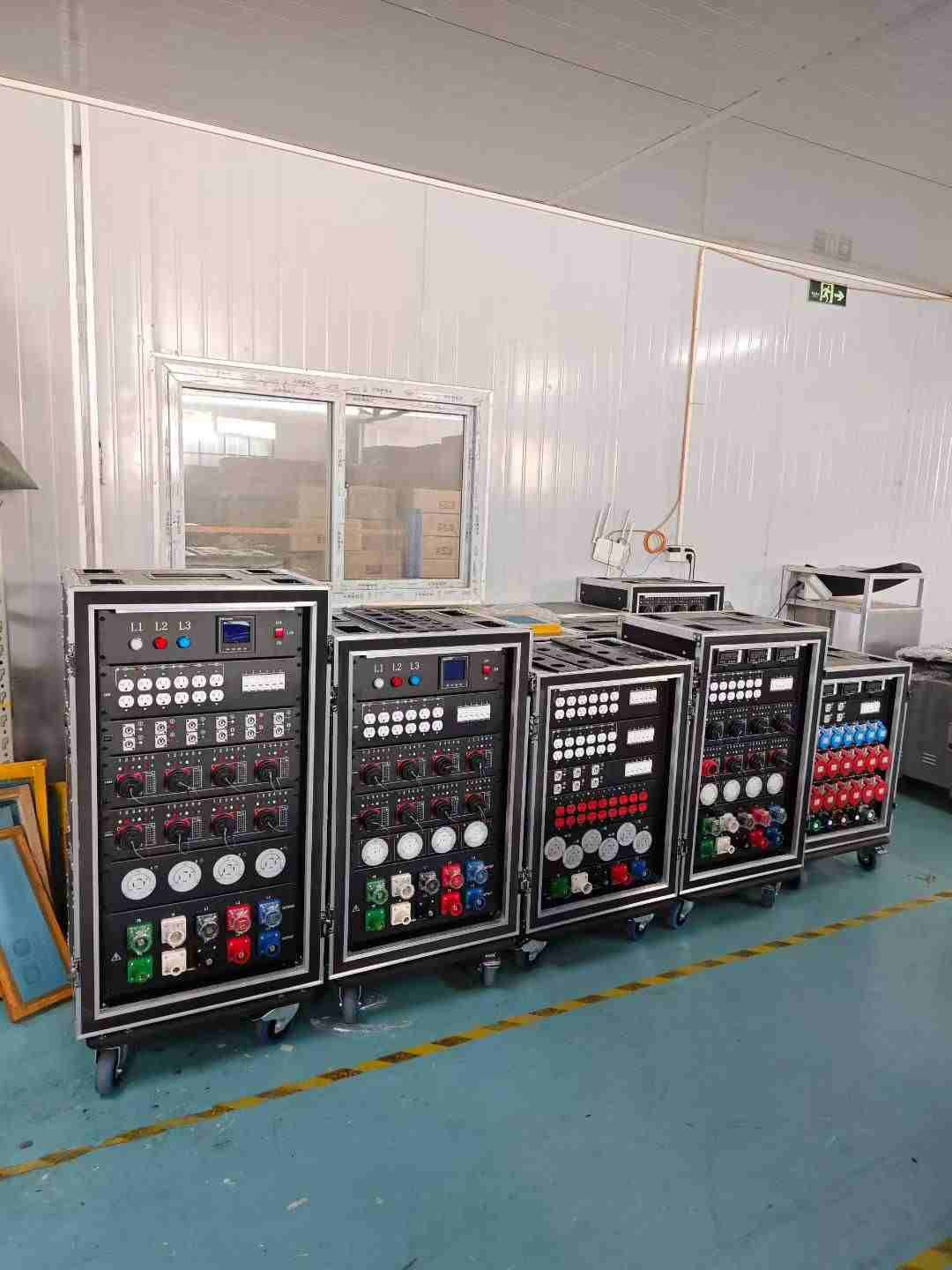装备飞行箱:终极装备保护解决方案
设备飞行箱 是 专门设计的坚固容器 专为在旅行中保护贵重、敏感或易碎设备而设计。也称为 道路情况 或者 转运箱飞行箱具有坚固的结构(通常是金属或高级塑料),可以保护设备免受撞击、振动、潮湿和灰尘的影响。飞行箱最初用于运输音乐巡演中的音频设备,现在已遍布各行各业--从现场直播和电影制作到军事、体育和医疗应用。从本质上讲,飞行箱就是一个重型运输箱,无论旅途多么艰辛,它都能确保所装物品完好无损。
什么是设备飞行箱?
飞行箱(或设备箱)本质上是一个 坚固、可上锁的箱子 齿轮。它通常由以下材料制成 铝、层压胶合板或模塑 ABS 塑料这些硬质面板由铝型材和重型硬件固定在一起,专为反复使用和撞击而设计。这些硬面板由铝型材和重型硬件固定在一起,专为反复使用和撞击而设计。机箱内部几乎总是包括 定制切割泡沫插入件 这些缓冲垫可以吸收震动,防止物品移动,使易碎物品(照相机、仪器、电子设备)不会晃动。这种缓冲装置可以吸收震动并防止移动,因此易碎物品(相机、仪器、电子设备)不会四处晃动。飞行箱通常都有嵌入式把手、安全锁扣(很多都有挂锁环或与 TSA 兼容的锁)以及防水防尘的橡胶密封垫。坚固的外部和填充的内部相结合,使飞行箱的保护性远远超过普通箱包。
设备飞行箱的主要特点
现代飞行箱包 多重保护功能 轻量化设计。主要特性包括
-
耐用的结构 高强度材料(铝或酚醛层压胶合板)使机箱既轻便又异常坚固。四角装有钢制或铝制球角,以抵御冲击。加固面板和重型硬件可确保箱子经受住运输和公路旅行的严酷考验。
-
定制泡沫内饰: 每个案例通常附带 数控切割泡沫插件 为您的装备量身定制。泡沫衬里与装备的形状完全吻合,防止任何移动。耐用的衬垫可吸收掉落或重物搬运时产生的冲击。例如,音响工程师使用带有内部泡沫的箱子来紧贴调音台或麦克风,最大限度地减少运输过程中的损坏。
-
安全门锁 飞行箱的特点 嵌入式重型门锁 可使盖子牢牢关闭。许多锁扣都有内置锁或挂锁,以增加安全性。美国运输安全管理局(TSA)批准的锁扣在航空旅行箱中很常见,允许机场检查人员在不开刀的情况下开锁。这种防篡改硬件有助于保护昂贵的装备不被偷窃或意外打开。
-
移动性(轮子和把手): 许多机箱都配有 可伸缩手柄和坚固轮子 便于运输。大型飞行箱通常配有 360° 旋转脚轮,由减震橡胶制成,因此即使是重型设备也能在机场或摄影棚内顺利滚动。符合人体工程学原理的嵌入式手柄可轻松提起或搬运较小的箱子。
-
可堆叠设计 飞行箱设计用于 堆放 在不使用时或在散装运输过程中,也可使用。这些系统通常包括堆叠定位器、球角和脚轮盘等功能,使设备嵌套在一起而不会滑动。有些系统甚至使用自动对准脚轮和堆叠销钉,将箱子锁定到位。这种节省空间的堆叠性对于同时处理多个箱子的旅游或物流团队来说是一大优势。
为什么选择设备飞行箱?
投资飞行箱意味着选择 可靠和安心.主要优势包括
-
最大保护: 飞行箱可吸收冲击、颠簸和撞击。其坚硬的外壳可以抵挡碰撞,内部泡沫则可以缓冲设备。这最大限度地减少了因跌落或粗暴操作而造成的损坏,而这些损坏很可能会毁坏普通箱包中的设备。对于专业人士(音乐家、电影制片人、广播员)来说,避免在旅途中损坏部件至关重要,而飞行箱可以提供这种程度的保护。
-
跨行业多功能性: 这些箱子不仅适用于巡回演出和 DJ。它们用于 航空电子、安全、体育、医疗、军事以及许多其他行业。从调音台和照相机到手术器械和电子测试设备,任何贵重和易损的物品都可以用飞行箱运输。飞行箱的广泛适用性使其成为保护各种设备的一站式解决方案。
-
可定制性: 飞行箱可以完全 定做 以满足您的需求。制造商可以调整尺寸、内部开孔、颜色或品牌,以匹配您的装备。公司通常会在箱子上添加徽标或标签,以便在巡演和活动中强化品牌。无论您需要的是特定型号的吉他箱、服务器机架,还是一套电动工具箱,我们都能为您量身定做。可以指定泡沫布局和隔间,这意味着每件物品都能在箱子里安家。
-
长期耐久性(成本效益): 虽然飞行箱的前期费用比普通箱包或硬箱要高,但它们是一种 长期投资.制造精良的手提箱可持续使用多年。由于它们采用优质的硬件和材料,因此可以经受频繁的航空托运、卡车旅行和户外环境的考验。随着时间的推移,它们所提供的保护远远超过了它们的价格,因为更换损坏的设备通常要比箱子本身昂贵得多。
-
交通便利: 轮子、可堆叠性和统一尺寸等特点使多个箱子的搬运变得更加简单。重型装备可以更轻松地滚动或装载,从而减轻工作人员的体力负担。这种效率是一种实际优势,可在装卸和设置过程中节省时间和人力。
行业和应用
飞行案例有 随处可见 设备需要安全运输。它们在娱乐业(巡回演出、节日庆典、电影拍摄)中占据主导地位,也是贸易展览和企业活动中 AV 设备的标准配置。军事和航空航天领域的电子设备和敏感部件都依赖于飞行箱。医疗和实验室设备也使用飞行箱移动,以防止污染或破损。甚至赛车和可再生能源等行业也使用飞行箱来存放工具和测试设备。总之,从摇滚乐队(吉他和扬声器)到电视新闻组(摄像机和发射机)再到体育场(照明和广播控制台),任何重视设备的领域都会使用飞行箱。这种广泛采用说明了 专业人员对飞行案例的信心 以保护关键设备。
选择合适的设备飞行箱
要选择一款完美的飞行箱,就必须使其设计与您的设备和需求相匹配。主要考虑因素包括
-
尺寸和合身度: 箱子应与您的装备贴合。在选择尺寸时,应尽量减少泡沫插入后留下的空隙。过大的空间会影响移动,因此越小越安全。许多制造商都提供定制的内部布局或 "拾取--拾取 "泡沫,这样您就可以精确地在您的物品周围安排插入物。
-
材料: 根据您的优先级,选择铝合金、ABS 塑料或层压胶合板。铝制箱体非常结实、轻便,而 ABS/塑料箱体通常具有更好的防水/防尘密封性。胶合板(层压板)非常耐用,常用于大型旅行箱。如果这对您很重要,请考虑随身携带或航空公司托运的重量限制。
-
移动功能 如果您经常出差或处理非常重的物品,则应选择可伸缩的把手、平滑的旋转轮,可能还需要多个把手。脚轮的尺寸很重要:大轮子更容易滚动较远的距离,但凹陷(平齐)的轮子更适合狭小的可堆叠箱子
-
安全和密封: 检查箱子是否有可上锁的插销或 TSA 友好型锁具。如果您需要防尘/防水保护,请确保它具有橡胶密封圈或 IP65/IP67 防护等级。对于航空旅行,有些箱子包括压力释放阀,用于平衡气压和防止真空锁,这对易碎设备来说是个福音。
-
附加硬件: 查找具有以下特征的案例 堆叠盘子/碟子 如果要堆叠多个装置。还要确保手柄、锁扣和铰链是重型的。加固的钢或锌五金件以及大量的铆钉会延长使用寿命。
明智的选择意味着要评估您使用箱子的方式和地点,然后选择适合这些条件的功能。一个精心挑选的飞行箱将为您提供多年的可靠服务。
结论
设备 飞行箱 是一个 必不可少的工具 适用于运输高价值或易损设备的任何人。飞行箱具有坚固的外部和缓冲的内部,能够提供无与伦比的保护,防止旅行中从粗暴搬运到环境暴露等各种危险。飞行箱具有可定制性、长期耐用性和行业广泛采用性,让您高枕无忧--您的设备到达后即可投入工作。对于移动中的专业人士来说,优质的飞行箱是一项明智的投资:它可以保护专业工具,让您可以专注于工作,而不必担心损坏。
资料来源 关于飞行箱的权威行业和制造商指南。每个资料来源都证实了在专业环境中使用设备飞行箱的主要特点和优势。



